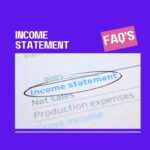Why is a Balance Sheet Important?
1️⃣ Evaluates Financial Health 💰
- Shows a company’s assets, liabilities, and equity, helping assess liquidity, solvency, and overall stability.
2️⃣ Helps in Investment Decisions 📈
- Investors analyze balance sheets to check debt levels, cash reserves, and profitability before investing.
3️⃣ Measures Liquidity & Solvency 💵
- Helps determine if a company can meet short-term obligations (via current ratio & quick ratio) and long-term financial commitments.
4️⃣ Supports Business Growth & Planning 🚀
- Companies use balance sheets to plan expansions, secure loans, or manage working capital efficiently.
5️⃣ Aids in Comparing Companies 📊
- Investors and analysts compare balance sheets of different companies in the same industry to identify stronger businesses.
6️⃣ Identifies Financial Risks ⚠️
- High debt, declining assets, or liquidity issues in the balance sheet signal potential financial trouble.
What are current assets and why are they important?
Current assets are short-term assets that a company owns and can convert into cash within one year. They are crucial for day-to-day operations and indicate a company's liquidity and financial health.
✅ Measures Liquidity – Helps assess if a company can meet short-term liabilities.
✅ Ensures Smooth Operations – Sufficient current assets mean a company can cover daily expenses and working capital needs.
✅ Attracts Investors & Lenders – A strong current asset position signals financial stability and makes it easier to secure loans or investments.
✅ Helps in Business Growth – Companies with high liquid assets can invest in expansion opportunities without taking on excess debt.
✅ Key Examples of Current Assets:
1️⃣ Cash & Cash Equivalents – Money in hand, bank balances, short-term investments.
2️⃣ Accounts Receivable – Money owed by customers for goods/services delivered.
3️⃣ Inventory – Raw materials, work-in-progress, and finished goods ready for sale.
4️⃣ Marketable Securities – Stocks, bonds, or short-term investments easily sold.
5️⃣ Prepaid Expenses – Advance payments for rent, insurance, or other services.
How do companies value their assets on the balance sheet?
Companies use different valuation methods to record their assets on the balance sheet, depending on the type of asset and accounting standards.
✅ Key Asset Valuation Methods:
1️⃣ Historical Cost Method 💰
- Assets are recorded at their original purchase price.
- Used for fixed assets (e.g., buildings, machinery).
- Does not reflect current market value but ensures consistency.
2️⃣ Fair Market Value (FMV) 📈📉
- Assets are valued based on their current market price.
- Used for marketable securities & financial investments.
- Adjusted periodically to reflect real-time market conditions.
3️⃣ Net Realizable Value (NRV) 🏪
- Used for inventory valuation (i.e., estimated selling price minus costs).
- Ensures inventory is not overvalued on the balance sheet.
4️⃣ Depreciated/Amortized Value ⏳
- Depreciation is applied to tangible assets (e.g., equipment) over time.
- Amortization is used for intangible assets (e.g., patents, trademarks).
- Reflects gradual wear and tear or usage of assets.
5️⃣ Impairment Value 🚨
- If an asset loses value permanently (e.g., obsolete machinery), companies write it down to reflect the lower value.
What are long-term liabilities, and how do they impact financial health?
Long-term liabilities are financial obligations due after one year, including loans, bonds, leases, and pension liabilities. They help fund growth, expansion, and investments but must be managed carefully.
✅ Impact on Financial Health:
✔ Positive:
- Supports business expansion and infrastructure.
- Interest payments offer tax benefits.
- Helps leverage capital efficiently.
⚠ Negative:
- High debt increases risk and impacts credit ratings.
- Interest costs reduce profits.
- Excessive liabilities can lead to financial instability.
🔹 Key Metric: Debt-to-Equity Ratio – Higher ratio = Higher risk.
How do changes in the balance sheet reflect a company’s performance?
A company’s balance sheet changes over time, reflecting its financial health, growth, and risks. Key changes provide insights into profitability, liquidity, and stability.
✅ Key Indicators & Their Impact:
1️⃣ Increase in Assets 📈 – Indicates business growth, expansion, or improved cash flow.
- More cash → Strong liquidity.
- More inventory or receivables → Growing sales but watch for slow collections.
2️⃣ Increase in Liabilities ⚠️ – Could mean growth (good) or rising debt burden (risky).
- More long-term debt → Expansion but higher interest costs.
- More current liabilities → May signal cash flow stress.
3️⃣ Rising Shareholders’ Equity 💰 – Shows higher profits, reinvestment, or strong financial stability.
- Retained earnings growth → Profits are being reinvested.
- Issuance of new shares → More capital but potential dilution of ownership.
4️⃣ Declining Liquidity (Low Current Assets) 🚨 – Signals cash flow issues or potential financial trouble.
- Low cash & high short-term debt → Liquidity crisis risk.
- Increased payables & declining inventory → Cost-cutting or demand slowdown.
What does a strong vs. weak balance sheet look like?
A strong balance sheet reflects financial stability, liquidity, and low debt, while a weak balance sheet signals high risk, low liquidity, and potential financial trouble.
✅ Key Indicators of a Strong Balance Sheet:
✔ High Liquidity 💰 – Ample cash & current assets to cover short-term liabilities.
✔ Low Debt Levels 📉 – Manageable long-term liabilities with a healthy debt-to-equity ratio.
✔ Strong Shareholders’ Equity 📈 – High retained earnings and minimal dilution.
✔ Positive Working Capital ⚡ – Current assets > current liabilities.
✔ Healthy Profitability 💵 – Rising retained earnings & positive cash flow.
⚠ Signs of a Weak Balance Sheet:
❌ Low Liquidity 🚨 – Insufficient cash to cover short-term debts.
❌ High Debt Burden 💳 – Excessive liabilities leading to financial stress.
❌ Negative Working Capital ⚠️ – Current liabilities > current assets (risk of default).
❌ Declining Equity 📉 – Losses, high debt, or shareholder dilution.
❌ Poor Cash Flow ❌ – Struggling to generate sufficient operating cash.
How can investors compare balance sheets across companies?
Investors compare balance sheets to assess financial health, stability, and growth potential. Key methods include:
✅ 1. Use Financial Ratios for Comparison 📉
- Current Ratio = Current Assets / Current Liabilities (Higher is better; >1.5 is ideal).
- Debt-to-Equity Ratio = Total Debt / Shareholders’ Equity (Lower is better; <1.0 is ideal).
- Asset Turnover Ratio = Revenue / Total Assets (Higher means efficient asset use).
✅ 2. Compare Growth in Key Metrics 📈
- Rising assets & equity → Strong financial performance.
- Declining liabilities & debt → Lower financial risk.
✅ 3. Analyze Cash & Liquidity 💰
- High cash reserves → Strong liquidity position.
- Cash flow trends (from Cash Flow Statement) → Ensures operational stability.
✅ 4. Industry Benchmarking 📊
- Compare with industry peers (e.g., a tech company's debt structure differs from a manufacturing firm).
- Look at competitor trends to assess relative financial strength.
✅ 5. Check for Red Flags 🚨
- Negative working capital (liabilities > assets) → Liquidity risk.
- High debt burden → Financial distress.
- Declining retained earnings → Losses or excessive dividends.
What are contingent liabilities, and how do they impact financial stability?
Contingent liabilities are potential obligations that may arise based on future events. They are not recorded as actual liabilities but disclosed in financial statements if the likelihood of occurrence is high and the amount can be reasonably estimated.
✅ Examples of Contingent Liabilities:
1️⃣ Lawsuits – Pending legal cases where the company may have to pay damages.
2️⃣ Loan Guarantees – If a company guarantees another party’s loan, it may be liable if the borrower defaults.
3️⃣ Product Warranties – Estimated repair/replacement costs for defective products.
4️⃣ Tax Disputes – Potential penalties or unpaid taxes under government scrutiny.
Impact on Financial Stability 🚨
✔ Minimal Impact if Well-Managed – If the company has sufficient reserves, contingent liabilities don’t pose major risks.
⚠ Risk of Unexpected Financial Loss – If the event occurs, the company must pay a large sum, affecting cash flow & profitability.
📉 Investor Confidence & Credit Ratings – Large undisclosed contingencies can hurt stock prices & borrowing ability.
🔍 Legal & Compliance Risks – Companies must properly disclose contingencies to maintain transparency.
What is shareholders' equity, and how is it calculated?
Shareholders' equity represents the net worth of a company, showing the value left for shareholders after all liabilities are deducted from assets. It indicates the company’s financial strength and ownership value.
Formula to Calculate Shareholders’ Equity:
Shareholder's Equity = Total Assets - Total Liabilities
Key Components of Shareholders’ Equity:
Share Capital – Funds raised from issuing common & preferred stock.
Retained Earnings – Accumulated profits reinvested in the business.
Reserves & Surplus – Additional funds set aside for contingencies.
Treasury Stock (if any) – Shares bought back by the company (reduces equity).



